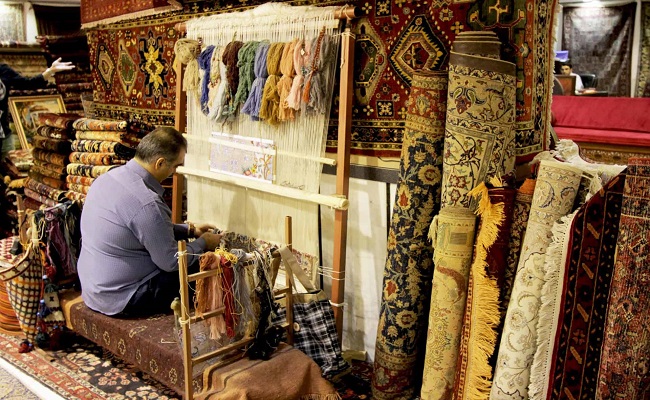Carpet Weaving in Fars
Tazieh
August 26, 2019Qalishuyan
August 26, 2019Traditional skills of carpet weaving in Fars
Carpet Weaving is one of the most worldwide reputations of Iranian and most prominent Persian carpet weavers are in southwestern Iran.
Carpet wool is cut by local men in the spring or fall. Then they construct the carpet loom – a horizontal frame placed on the ground – while women convert the wool into yarn on spinning wheels. The colors used are mainly natural: reds, blues, browns, and whites produced from dyestuff including madder, indigo, lettuce leaf, walnut skin, cherry stem, and pomegranate skin.

Women are responsible for selecting motifs and colors, weaving, and bringing scenes of their nomadic lives to the carpet. They weave without any preset motif – no weaver can weave two carpets of the same motif.
Colored yarn is tied to the wool web to create the carpet. To finish, the sides are sewn, extra wool is burned away to make the designs vivid, and the carpet is given a final cleaning.
Most Iranian carpets have imaginary motifs. In other words, they are made without a printed motif. Therefore, they’re more natural than perfectly symmetrical.
Sometimes, while migrating, nomads carry weaving looms from one spot to another and set them up to continue weaving. The first carpet, known as ‘Dastoor’, is used as a model to begin weaving the subsequent rugs. So, in case any loom re-setup is needed, a model is already there.
All these subtle techniques, tips, and tricks are handled by women among nomads. They are also in charge of keeping these traditional skills and transferring them to the next generations.

